41 one hot encoding vs label encoding
Comparing Label Encoding And One-Hot Encoding With Python Implementation This will provide us with the accuracy score of the model using the one-hot encoding. It can be noticed that after applying the one-hot encoder, the embarked class is assumed as C=1,0,0, Q=0,1,0 and S= 0,0,1 respectively while the male and female in the sex class is assumed as 0,1 and 1,0 respectively. Here, by comparing the accuracy scores of ... Label Encoder vs. One Hot Encoder in Machine Learning What one hot encoding does is, it takes a column which has categorical data, which has been label encoded, and then splits the column into multiple columns. The numbers are replaced by 1s and 0s,...
Label Encoding vs. One Hot Encoding: What's the Difference? One Hot Encoding In most scenarios, one hot encoding is the preferred way to convert a categorical variable into a numeric variable because label encoding makes it seem that there is a ranking between values. For example, consider when we used label encoding to convert team into a numeric variable:

One hot encoding vs label encoding
Difference between Label Encoding and One Hot Encoding - H2S Media Conclusion Use Label Encoding when you have ordinal features present in your data to get higher accuracy and also when there are too many categorical features present in your data because in such scenarios One Hot Encoding may perform poorly due to high memory consumption while creating the dummy variables. Difference between Label Encoding and One-Hot Encoding | Pre-processing ... In one hot encoding, each label is converted to an attribute and the particular attribute is given values 0 (False) or 1 (True). For example, consider a gender column having values Male or M and Female or F. After one-hot encoding is converted into two separate attributes (columns) as Male and Female. Encoding Categorical Variables: One-hot vs Dummy Encoding This is because one-hot encoding has added 20 extra dummy variables when encoding the categorical variables. So, one-hot encoding expands the feature space (dimensionality) in your dataset. Implementing dummy encoding with Pandas To implement dummy encoding to the data, you can follow the same steps performed in one-hot encoding.
One hot encoding vs label encoding. The Difference between One Hot Encoding and LabelEncoder? There you go, you overcome the LabelEncoder problem, and you also get 4 feature columns instead of 8 unlike one hot encoding. This is the basic intuition behind Binary Encoder. **PS:** Give 2 power 11 is 2048 and you have 2000 categories for zipcodes, you can reduce your feature columns to 11 instead of 1999 in the case of one hot encoding! Share Ordinal and One-Hot Encodings for Categorical Data Encoding Categorical Data There are three common approaches for converting ordinal and categorical variables to numerical values. They are: Ordinal Encoding One-Hot Encoding Dummy Variable Encoding Let's take a closer look at each in turn. Ordinal Encoding In ordinal encoding, each unique category value is assigned an integer value. When to Use One-Hot Encoding in Deep Learning? - Analytics India Magazine One hot encoding is a highly essential part of the feature engineering process in training for learning techniques. For example, we had our variables like colors and the labels were "red," "green," and "blue," we could encode each of these labels as a three-element binary vector as Red: [1, 0, 0], Green: [0, 1, 0], Blue: [0, 0, 1]. What are the pros and cons of label encoding categorical ... - Quora Open the VS code first. 2. Click on the Manage icon in the below left. 3. Then click on the Settings option or press shortcut key ctrl + , 4. Search 'Run In Terminal' and scroll down then you will see 'Code-runner: Run In Terminal' 5. Click on the box icon. After this 'Run In Terminal' setting is turned on. Then reopen your Visual Studio Code.
Target Encoding Vs. One-hot Encoding with Simple Examples One-hot Encoding One-hot encoding is easier to conceptually understand. This type of encoding simply "produces one feature per category, each binary." Or for the example above, creating a new... Label Encoding vs. One Hot Encoding | Data Science and Machine Learning ... One Hot Encoding Categorical Encoder Label Encoding In previous sections, we did the pre-processing for continuous numeric features. But, our data set has other features too such as Gender, Married, Dependents, Self_Employed and Education. All these categorical features have string values. For example, Gender has two levels either Male or Female. regression - Label encoding vs Dummy variable/one hot encoding ... 1 Answer. It seems that "label encoding" just means using numbers for labels in a numerical vector. This is close to what is called a factor in R. If you should use such label encoding do not depend on the number of unique levels, it depends on the nature of the variable (and to some extent on software and model/method to be used.) Coding ... Categorical Encoding | One Hot Encoding vs Label Encoding The number of categorical features is less so one-hot encoding can be effectively applied. We apply Label Encoding when: The categorical feature is ordinal (like Jr. kg, Sr. kg, Primary school, high school) The number of categories is quite large as one-hot encoding can lead to high memory consumption.
Why One-Hot Encode Data in Machine Learning? Integer Encoding. One-Hot Encoding. 1. Integer Encoding. As a first step, each unique category value is assigned an integer value. For example, " red " is 1, " green " is 2, and " blue " is 3. This is called a label encoding or an integer encoding and is easily reversible. For some variables, this may be enough. Label Encoder vs One Hot Encoder in Machine Learning [2022] - upGrad blog One hot encoding takes a section which has categorical data, which has an existing label encoded and then divides the section into numerous sections. The volumes are rebuilt by 1s and 0s, counting on which section has what value. The one-hot encoder does not approve 1-D arrays. The input should always be a 2-D array. PyTorch One Hot Encoding | How to Create PyTorch One Hot Encoding? - EDUCBA From the above article, we have taken in the essential idea of the PyTorch one-hot encoding, and we also see the representation and example of the PyTorch one-hot encoding. Furthermore, we learned how and when we use the PyTorch one-hot encoding from this article. Recommended Articles. This is a guide to PyTorch One Hot Encoding. One Hot Encoding VS Label Encoding | by Prasant Kumar | Medium Here we use One Hot Encoders for encoding because it creates a separate column for each category, there it defines whether the value of the category is mentioned for a particular entry or not by...
Feature Engineering: Label Encoding & One-Hot Encoding - Fizzy The categorical data are often requires a certain transformation technique if we want to include them, namely Label Encoding and One-Hot Encoding. Label Encoding. What the Label Encoding does is transform text values to unique numeric representations. For example, 2 categorical columns "gender" and "city" were converted to numeric values, a ...
Machine learning feature engineering: Label encoding Vs One-Hot ... In this tutorial, you will learn how to apply Label encoding & One-hot encoding using Scikit-learn and pandas. Encoding is a method to convert categorical va...
When to use One Hot Encoding vs LabelEncoder vs DictVectorizor? Still there are algorithms like decision trees and random forests that can work with categorical variables just fine and LabelEncoder can be used to store values using less disk space. One-Hot-Encoding has the advantage that the result is binary rather than ordinal and that everything sits in an orthogonal vector space.
One hot encoding vs label encoding (Updated 2022) - Stephen Allwright That answer depends very much on your context, however given that One Hot Encoding is possible to use across all machine learning models whilst the Label Encoding tends to only work best on tree based models, I would always suggest to start with One Hot Encoding and look at Label Encoding if you see a specific need.
label encoding vs one hot encoding | Data Science and Machine Learning ... In label encoding, we label the categorical values into numeric values by assigning each category to a number. Say, our categories are "pink" and "white" in label encoding we will be replacing 1 with pink and 0 with white. This will lead to a single numerically encoded column. Whereas in one-hot encoding, we end up with new columns.
Choosing the right Encoding method-Label vs OneHot Encoder RMSE of One Hot Encoder is less than Label Encoder which means using One Hot encoder has given better accuracy as we know closer the RMSE to 0 better the accuracy, again don't be worried for such a large RMSE as I said this is just a sample data which has helped us to understand the impact of Label and OneHot encoder on our model.
Categorical Data Encoding with Sklearn LabelEncoder and ... - MLK Label Encoding vs One Hot Encoding. Label encoding may look intuitive to us humans but machine learning algorithms can misinterpret it by assuming they have an ordinal ranking. In the below example, Apple has an encoding of 1 and Brocolli has encoding 3. But it does not mean Brocolli is higher than Apple however it does misleads the ML algorithm.
Label Encoding vs One Hot Encoding | by Hasan Ersan YAĞCI - Medium Label Encoding and One Hot Encoding 1 — Label Encoding Label encoding is mostly suitable for ordinal data. Because we give numbers to each unique value in the data. If we use label encoding in...
Encoding Categorical Variables: One-hot vs Dummy Encoding This is because one-hot encoding has added 20 extra dummy variables when encoding the categorical variables. So, one-hot encoding expands the feature space (dimensionality) in your dataset. Implementing dummy encoding with Pandas To implement dummy encoding to the data, you can follow the same steps performed in one-hot encoding.
Difference between Label Encoding and One-Hot Encoding | Pre-processing ... In one hot encoding, each label is converted to an attribute and the particular attribute is given values 0 (False) or 1 (True). For example, consider a gender column having values Male or M and Female or F. After one-hot encoding is converted into two separate attributes (columns) as Male and Female.
Difference between Label Encoding and One Hot Encoding - H2S Media Conclusion Use Label Encoding when you have ordinal features present in your data to get higher accuracy and also when there are too many categorical features present in your data because in such scenarios One Hot Encoding may perform poorly due to high memory consumption while creating the dummy variables.
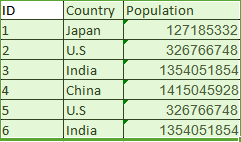
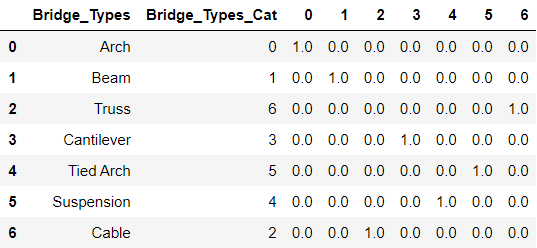

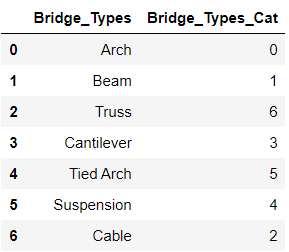
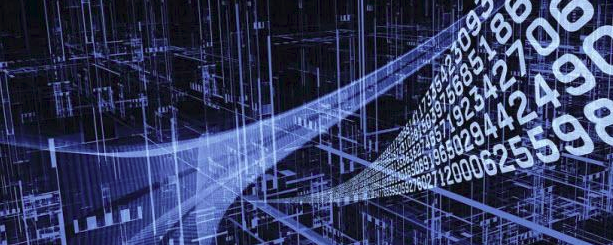
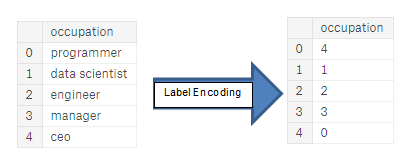



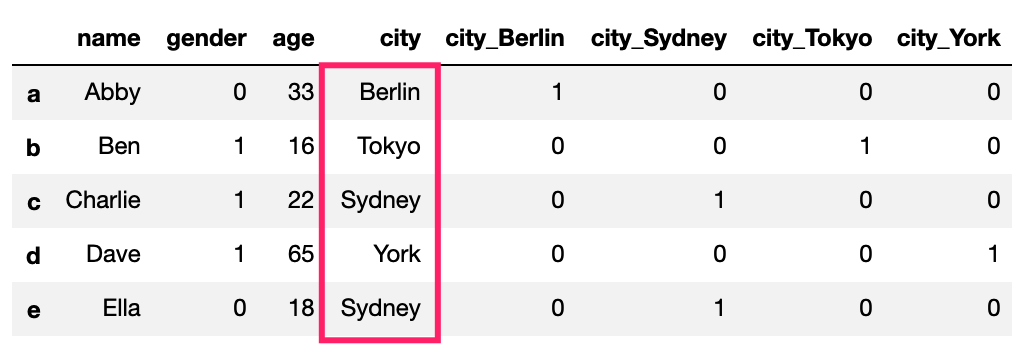



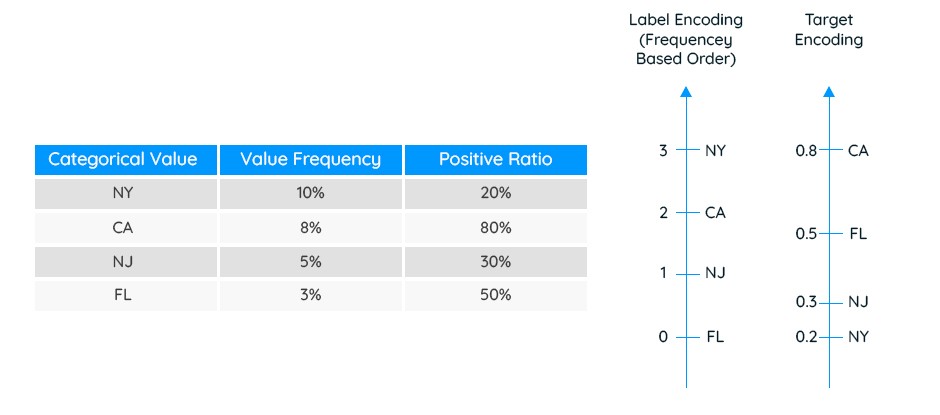





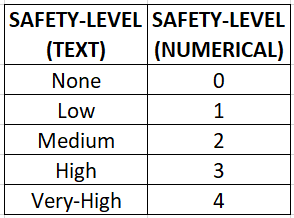




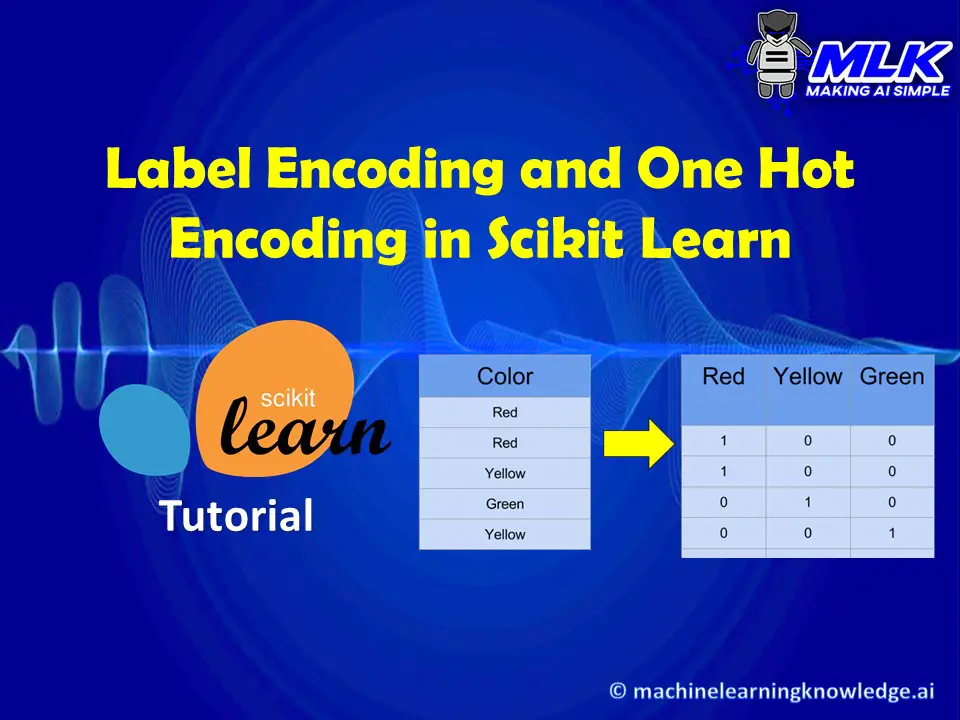





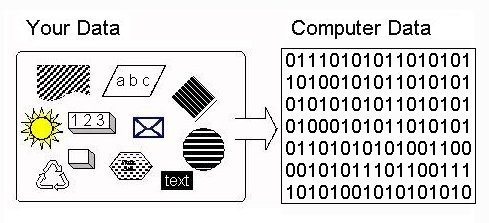
Post a Comment for "41 one hot encoding vs label encoding"